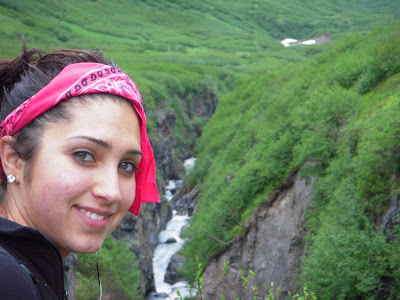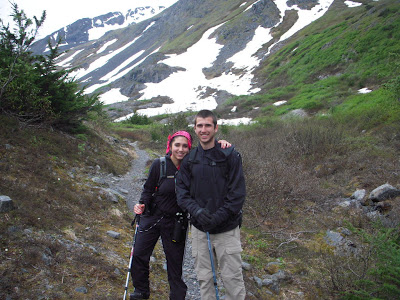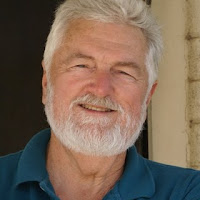-GRAND CANYON TOUR: GET UP AT 430AM, DRIVE 90 MILES TO THE DITCH, HAVE 5TH CUP OF COFFEE, PREFLIGHT, PEE, GET IN START UP, LOAD UP THE MIDWESTERN BEEFEATERS, FLY FOR 30 MINUTES, FLY FOR 30 MINUTES, FLY FOR 30 MINUTES, FLY FOR AN HOUR, FLY FOR 30 MINUTES, FLY FOR AN HOUR, CAN I HAVE A BREAK? NO - OK, FLY FOR 30 MINUTES, FLY FOR 30 MINUTES, FLY FOR 30 MINUTES, FLY FOR 30 MINUTES, FLY FOR 30 MINUTES, FLY FOR 30 MINUTES, FLY FOR AN HOUR, GET OUT, TIE DOWN, PEE, DRIVE 90 MILES HOME, EAT, SLEEP, REPEAT.
-HAWAII TOUR: SEE ABOVE BUT GET TO WEAR FUNKY HAWAII SHIRT AND SHORTS.
-OFFSHORE OIL: SEE ABOVE BUT THE TOURISTS SMELL BAD AND THE RIVER IS A LOT BIGGER.
-TUNA BOAT: SEE ABOVE BUT YOU GET TO CHANT WHERE DA FISH, WHERE DA FISH.
-POWERLINE PATROL: SEE ABOVE BUT YOU GET TO SAY TOWER ONE, TOWER TWO, TOWER THREE, TOWER FOUR, TOWER FIVE.......TOWER 496, TOWER 497 ETC.
-PIPELINE PATROL: SEE ABOVE BUT YOU GET TO SAY, YUP ITS A PIPELINE, YUP ITS A PIPELINE, YUP ITS A PIPELINE, YUP ITS A PIPELINE, YUP ITS A PIPELINE, YUP ITS A PIPELINE,.......SH!T THERES A WIRE! OK, YUP ITS A PIPELINE, YUP ITS A PIPELINE, YUP ITS A PIPELINE, YUP ITS A PIPELINE, YUP ITS A PIPELINE.
-EMS: GET TO WORK, HAVE 7TH CUP OF COFFEE, PREFLIGHT, PEE, NEWS AT 6, EAT, SLEEP, EAT, SLEEP, EAT, SLEEP, EAT, SLEEP, BEEP BEEP BEEP, MOTORCYCLE VRS A BIG RIG, FLY 20 MINUTES, LOAD PATIENT, YUUUUUUUKO THAT LOOKS LIKE IT HURTS! FLY 20 MINUTES, OFFLOAD, DEBRIEF, EAT, SLEEP, EAT, SLEEP, EAT, SLEEP. GO HOME.
-LOGGING: GET UP AT 5, HAVE 3RD CUP OF COFFEE, PREFLIGHT, COMIN UP, LOG, LOG, LOG, LOG, LOG, LOG, LOG, LOG, LOG, LOG, LOG, LOG, LOG, LOG, LOG, LOG, LOG, WIPE UP CP'S PUKE, LOG, LOG, LOG, LOG, LOG, LOG, ECT SHUT DOWN, GO HOME. DRINK MASSIVE AMOUNTS OF BEER WITH HOOKERS.
-FIRE: GET UP AT 4AM, DRIVE AN HOUR, HAVE 9TH CUP OF COFFEE, MISSION PLAN, YOU WANT TO DO WHAT? PUT ON BUCKET, GO TO FIRE, OH BIG FIRE! UP DOWN TURN AROUND FETCH A PAIL OF WATER. REPEAT 160 TIMES. SHUT DOWN WAIT UNTIL 14 HOURS IS OVER. OUT OF DUTY TIME FIND TENT EAT AT BASE CAMP, VISIT LITTLE BLUE ROOM, SLEEP, UP AGAIN AT 5AM. REPEAT
-CFI: GET IN AT 9AM, HAVE 10 CUPS OF COFFEE THREE CIGS AND WAIT FOR NO SHOWS, NON ENGLISH SPEAKING STUDENT SHOWS UP, PREFLIGHT, FLIGHT, SCREAM I HAVE THE CONTROLS, REPEAT 20 TIMES, AFTER HOUR FLIGHT CLEAN SHORTS, REPEAT 5 TIMES, GO HOME KNOWING YOUR THE PILOT GOD THAT SAVED THE R22 FROM THE CLUTCHES OF THE STUDENT PILOT, GET ON PC AND TYPE RESUME, YUP GETTING THERE, 252.4 HOURS, LOOK FOR WAY TO GET TURBINE JOB WITH OUT FLIGHT TIME, GO TO SLEEP THINKING HOW GREAT IT WOULD BE TO BE WORKING AS A "REAL" PILOT!
From an unknown author
-HAWAII TOUR: SEE ABOVE BUT GET TO WEAR FUNKY HAWAII SHIRT AND SHORTS.
-OFFSHORE OIL: SEE ABOVE BUT THE TOURISTS SMELL BAD AND THE RIVER IS A LOT BIGGER.
-TUNA BOAT: SEE ABOVE BUT YOU GET TO CHANT WHERE DA FISH, WHERE DA FISH.
-POWERLINE PATROL: SEE ABOVE BUT YOU GET TO SAY TOWER ONE, TOWER TWO, TOWER THREE, TOWER FOUR, TOWER FIVE.......TOWER 496, TOWER 497 ETC.
-PIPELINE PATROL: SEE ABOVE BUT YOU GET TO SAY, YUP ITS A PIPELINE, YUP ITS A PIPELINE, YUP ITS A PIPELINE, YUP ITS A PIPELINE, YUP ITS A PIPELINE, YUP ITS A PIPELINE,.......SH!T THERES A WIRE! OK, YUP ITS A PIPELINE, YUP ITS A PIPELINE, YUP ITS A PIPELINE, YUP ITS A PIPELINE, YUP ITS A PIPELINE.
-EMS: GET TO WORK, HAVE 7TH CUP OF COFFEE, PREFLIGHT, PEE, NEWS AT 6, EAT, SLEEP, EAT, SLEEP, EAT, SLEEP, EAT, SLEEP, BEEP BEEP BEEP, MOTORCYCLE VRS A BIG RIG, FLY 20 MINUTES, LOAD PATIENT, YUUUUUUUKO THAT LOOKS LIKE IT HURTS! FLY 20 MINUTES, OFFLOAD, DEBRIEF, EAT, SLEEP, EAT, SLEEP, EAT, SLEEP. GO HOME.
-LOGGING: GET UP AT 5, HAVE 3RD CUP OF COFFEE, PREFLIGHT, COMIN UP, LOG, LOG, LOG, LOG, LOG, LOG, LOG, LOG, LOG, LOG, LOG, LOG, LOG, LOG, LOG, LOG, LOG, WIPE UP CP'S PUKE, LOG, LOG, LOG, LOG, LOG, LOG, ECT SHUT DOWN, GO HOME. DRINK MASSIVE AMOUNTS OF BEER WITH HOOKERS.
-FIRE: GET UP AT 4AM, DRIVE AN HOUR, HAVE 9TH CUP OF COFFEE, MISSION PLAN, YOU WANT TO DO WHAT? PUT ON BUCKET, GO TO FIRE, OH BIG FIRE! UP DOWN TURN AROUND FETCH A PAIL OF WATER. REPEAT 160 TIMES. SHUT DOWN WAIT UNTIL 14 HOURS IS OVER. OUT OF DUTY TIME FIND TENT EAT AT BASE CAMP, VISIT LITTLE BLUE ROOM, SLEEP, UP AGAIN AT 5AM. REPEAT
-CFI: GET IN AT 9AM, HAVE 10 CUPS OF COFFEE THREE CIGS AND WAIT FOR NO SHOWS, NON ENGLISH SPEAKING STUDENT SHOWS UP, PREFLIGHT, FLIGHT, SCREAM I HAVE THE CONTROLS, REPEAT 20 TIMES, AFTER HOUR FLIGHT CLEAN SHORTS, REPEAT 5 TIMES, GO HOME KNOWING YOUR THE PILOT GOD THAT SAVED THE R22 FROM THE CLUTCHES OF THE STUDENT PILOT, GET ON PC AND TYPE RESUME, YUP GETTING THERE, 252.4 HOURS, LOOK FOR WAY TO GET TURBINE JOB WITH OUT FLIGHT TIME, GO TO SLEEP THINKING HOW GREAT IT WOULD BE TO BE WORKING AS A "REAL" PILOT!
From an unknown author










































